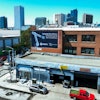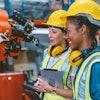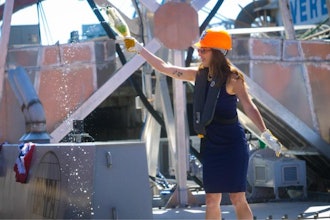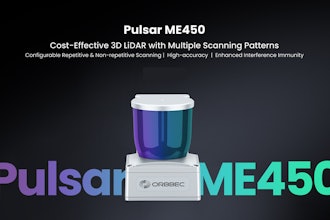Built in Germany in 2018, the revolutionary new AIDAnova cruise ship is currently cruising the open seas and making logistical history. The ship is the first cruise vessel to run on liquified natural gas (LNG), featuring a green cruise design created in compliance with Italian compliance organization RINA.
Maritime travel is currently responsible for around a billion tonnes of carbon dioxide emissions—around 3 percent of all CO2 emissions from human activities. But tighter regulations are coming into play. Meyer Werft and the engine manufacturer Caterpillar have kept pace with the changing times by taking an innovative approach to the thirteenth AIDA cruise ship. The drive technology meets stringent environmental regulations and every aspect of the engineering is centered around energy efficiency.
Similarly high standards were required of the suppliers, among them KNF Neuberger GmbH from Freiburg, Germany. The international market leader’s diaphragm pumps will be hard at work when the AIDAnova sets sail, monitoring the LNG supply to ensure safe operation. The gas control system from the company GenSys comprises control and safety equipment to ensure safe combustion at a predetermined rate. Each safety module contains two KNF N 150.1.2 membrane pumps — one of which is redundant, so that operation will continue if the other fails. The engine control system carries out continuous gas leak testing. The pump draws air from the clearance between the two walls of the jacketed LNG pipe and transfers this to the pressure and gas sensor for testing. The aluminum pump head parts are anodized to account for the corrosive effect of the sea air.
The KNF N 150.1.2 pump is designed to be protected against explosion in accordance with ATEX, and both the internal and engine explosion protection meet the ATEX requirements. The pump motor meets the criteria of all necessary maritime certifications: RINA, GL, Germanischer Lloyd, BV. All pump head components that come into contact with the medium have also been approved in accordance with the major marine certifications. This will ensure safe and secure transfer of LNG, around 3,500 cubic meters per tank filling, enabling AIDA Cruises’ new flagship to travel for up to two weeks at a time with significantly lower emissions than conventional cruise ships.
The ship boasts 17 restaurants, an innovative pool deck, classes at AIDA cooking school, upscale night clubs, shows and other entertainment, and—perhaps most notably—Peper robots, the newest tech development in the hospitality industry. These androids help guests board, embark, and navigate the ship during their stay. Owned by Carnival Cruises, the German AIDA cruise line plans to add six more LNG-powered cruise ships to their new Helios-class of vessels.





















